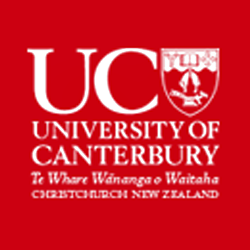
Improving the Effectiveness of Large-Class Teaching in Law Degrees
Status
Completed: 20 May 2012
Project Details
A project completed in 2012, undertaken by University of Canterbury, to identify effective methods for teaching large classes supported by limited hours of small group, face-to-face teaching.
Aims:
The main aims of the project were to:
- investigate current methods of teaching large compulsory law classes
- create a comprehensive resource base of effective pedagogical tools on how to deliver the core law courses approved by the New Zealand Council of Legal Education to be taught in New Zealand universities where student enrolments exceed 200 in number
- develop good practice guidelines for teaching the core courses in the New Zealand context.
Methodology:
The project used a mixed methods approach involving:
- a national and international literature review
- a survey of advancing law students at the University
- a survey of staff teaching at the law school
- focus groups with a selection of advancing law students from the survey
- group analysis of the data and the development of good practice guidelines.
Team

Professor Lynne Taylor
Project Leader
University of Canterbury
Professor Ursula Cheer
University of Canterbury
Professor Neil Boister
University of Canterbury
Professor Elizabeth Toomey
University of Canterbury
Dr Debra Wilson
University of Canterbury
Sascha Mueller
University of CanterburyStatus
Funding
$9,990.00 (excl GST)
Key Findings
The key findings from the project included:
- The results indicate that the majority of students claim to miss lectures only for what might be described as valid reasons, suggesting that students see attendance at lectures as important.
- Didactic lectures occur frequently, but students do not perceive the same barriers to learning in large class teaching relating to loss of interest and alienation that have been identified in some other studies. However, when asked what they would like, both students and staff agreed that a more interactive style would be good but recognised the difficulties in achieving change.
- Survey results indicated that passive learning and note-taking predominate currently. Furthermore, it appears the teacher is doing the work for the students in terms of locating, synthesising, critiquing and evaluating relevant legal rules. Students do not need to engage with the material unless and until the final examination date is looming.
- When students were asked what happened in the tutorials that they attended it became plain that there is greater student interaction than occurs in lectures. A clear majority of teachers thought that attendance at tutorials should be compulsory. A significant number of students wanted more tutorials.
- The survey results revealed that the lecture and tutorial method of teaching large law classes at Canterbury is a largely passive, top-down experience in which lecturers talk and students listen and take notes. Engagement with the material is delayed until exam study becomes imperative. Locating, synthesising, critiquing and evaluating the law are impaired in this model, but tolerated by the participants. Both staff and students are open to change, however.
- There are other teaching models identified in the literature including Case Method, Socratic Dialogue and Problem Method. These models were discussed in focus group meetings and most students responded favourably to this more active method of learning and there was a strong indication that students would prepare for lectures if a questioning approach was used, although some were worried about the workload.
Key Recommendations
The key recommendations from the project included:
Active and participatory learning techniques | It is generally accepted that passive learning is the result when lectures follow a didactic model. Although commentators agree that there is a place for the didactic lecture in legal education, there is a considerable body of literature suggesting that students have more opportunities to develop skills when active and participatory learning techniques are used in large classes.
Current methodology could be improved | While most law students are not dissatisfied with the didactic lecture method, they feel that the current methodology could be improved. Many staff are also interested in pursuing that goal.
Adaptive “good practice” template | It is possible to develop an adaptive “good practice” template to assist tertiary institutions teaching law to identify and apply the most appropriate model in the light of resources, goals, student profile, pedagogical robustness, and general ‘fit’ for that institution. The guidelines making up the template can be used by individual law teachers where an institutional approach is not pursued.
Future research | This project is the first in a projected series of projects. A second stage will involve application of the good practice guidelines to selected core courses at the University of Canterbury.
A research report prepared by Lynne Taylor, Ursula Cheer, Neil Boister, Elizabeth Toomey, Sascha Mueller and Debra Wilson.
(PDF, 507 KB, 54-pages).
- 20 May 2012